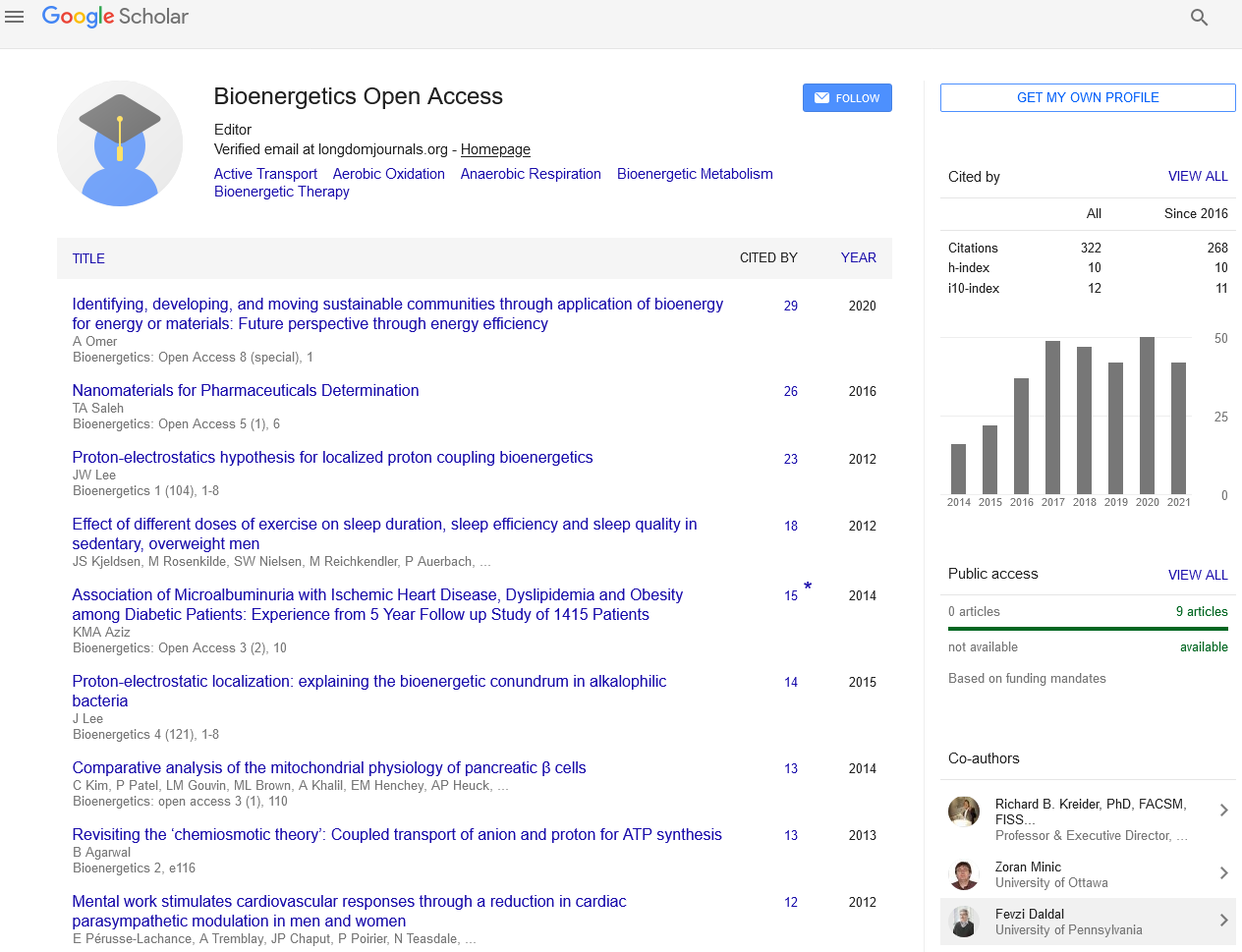Indexed In
- Open J Gate
- Genamics JournalSeek
- Academic Keys
- ResearchBible
- RefSeek
- Directory of Research Journal Indexing (DRJI)
- Hamdard University
- EBSCO A-Z
- OCLC- WorldCat
- Scholarsteer
- Publons
- Euro Pub
- Google Scholar
Useful Links
Share This Page
Journal Flyer

Open Access Journals
- Agri and Aquaculture
- Biochemistry
- Bioinformatics & Systems Biology
- Business & Management
- Chemistry
- Clinical Sciences
- Engineering
- Food & Nutrition
- General Science
- Genetics & Molecular Biology
- Immunology & Microbiology
- Medical Sciences
- Neuroscience & Psychology
- Nursing & Health Care
- Pharmaceutical Sciences
Abstract
Recommendations for Short Term Culturing of Viable Rod Shaped Rat Cardiomyocytes
Rabia Johnson, Phiwayinkosi Vusi Dludla, Christo John Frederick Muller, Faghri February and Johan Louw
In vitro primary cultures of isolated adult rat cardiomyocytes are becoming an increasingly popular model to study heart muscle stressors. This model can easily be manipulated in a controlled environment and results obtained can provide valuable insights into the pathophysiology of heart disease. Over the past years several improved methodologies have been described in the development of a robust technique to help maintain cardiomyocytes in culture. However, despite these advances, culturing of primary cardiomyocytes remains a challenge. In this study, we present a simple yet reproducible method for isolation and culture of viable rod shaped cardiomyocytes. Cardiomyocytes were maintained in supplemented Media 199 with or without foetal bovine serum. Their viability was assessed using trypan blue while the metabolic activity was measured using an Adenosine 5’-triphosphate assay. Results obtained in this study were used to provide general guidelines to evade pitfalls related to low cardiomyocyte yields and subsequent poor culturability of cardiomyocytes. Isolated cardiomyocytes cultured in the presence of foetal bovine serum maintained their in vitro striated rod shaped morphology for 72 h in culture, after which, they flattened and spread out. Whereas, cardiomyocytes cultured in the absence of foetal bovine serum remained rod shaped for up to 120 h.

